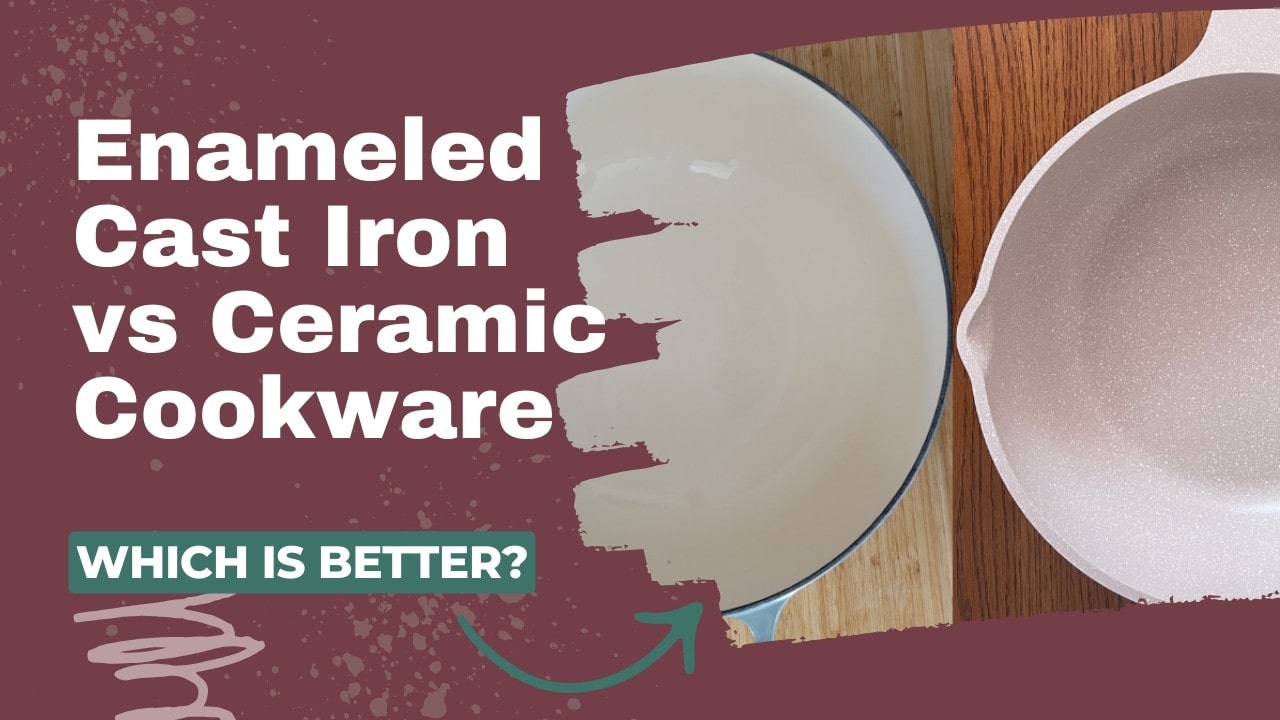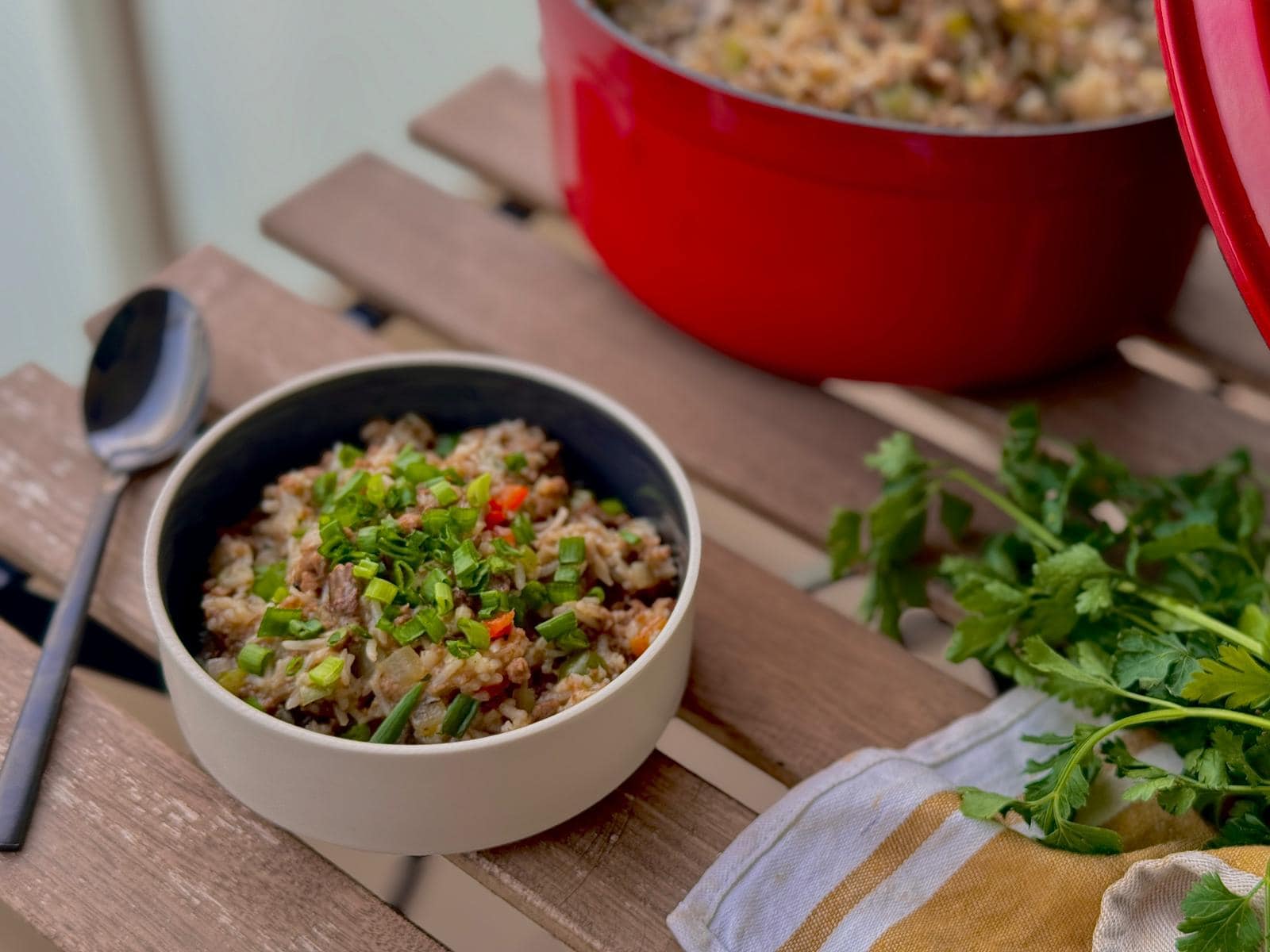If you’re searching for enameled cast iron vs ceramic, you must know your cookware! Because both pure ceramic (made of clay or stone) and enameled cast iron are heavy, glazed cookware materials popular for braising and slow cooking.
But what are the pros and cons of both materials? And how do they compare to ceramic nonstick cookware?
I’ll share my research and observations on all three cookware materials in this guide!
What’s the Difference Between Ceramic and Enameled Cast Iron Cookware?
Enameled cast iron cookware is made of 96-98% iron covered in an attractive layer of porcelain enamel. It is semi-nonstick and resists rusting. It’s heavier than ceramic cookware and less breakable. Examples are Staub and Le Creuset.
100% ceramic cookware is made of pure clay with a glass-like glaze. Examples of pure ceramic cookware include Emile Henry and
Ceramic nonstick cookware is something different altogether. Ceramic nonstick cookware (aka ceramic-coated cookware) typically has an aluminum or stainless steel pan body topped with a layer of sand-or-quartz-based ceramic. This technology, called the sol-gel process, is much newer than traditional ceramic or enameled cast iron craftsmanship. Examples of ceramic-coated cookware include Caraway, GreenPan, and Blue Diamond.
Which is better – Enameled Cast Iron or Ceramic Cookware?
Personally, I prefer enameled cast iron. It has the power to drive heat into food, cooking it evenly and thoroughly. It can be used on the oven or stovetop and will last decades if you treat it gently. Ceramic cookware is less versatile. Pure ceramic cookware can be easier to break, and ceramic nonstick cookware will wear out in 1-3 years.
Let’s cover the pros and cons of each of these:
Enameled Cast Iron
Not all enameled cast iron is created equal. The gold standard brand, Le Creuset, is very expensive. It’s made in France and has three layers of enamel finish, which help it last for generations.
You need to use oil when cooking in enameled cast iron, but it does not need to be seasoned like natural cast iron. It’s also safe for vinegar and tomato-based dishes since the enamel prevents acids from reacting with the iron beneath.
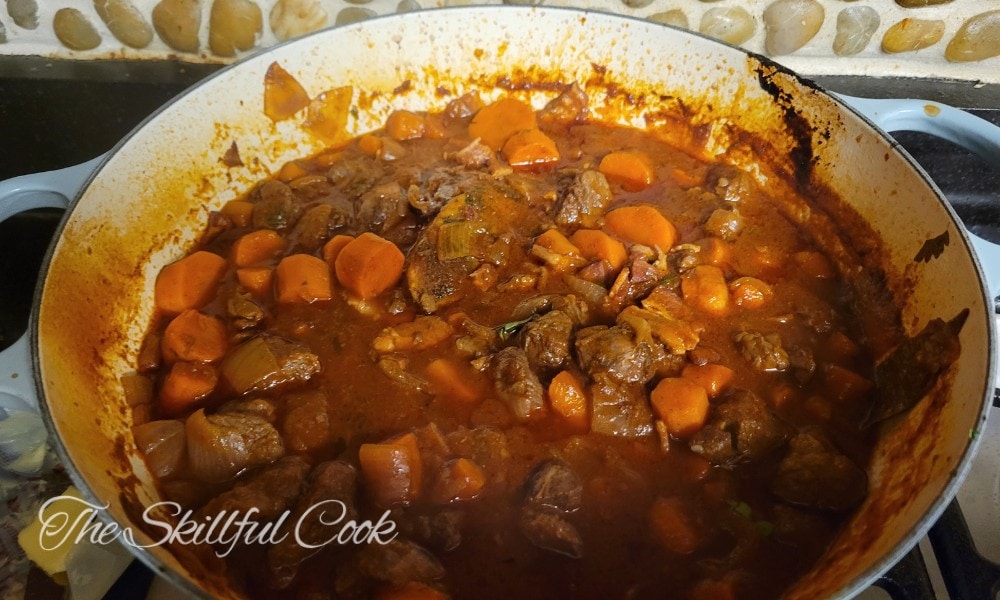
It’s the only option of the three that is dishwasher-safe (although it will last longer if you hand-wash it). Le Creuset is the lightest enameled cast iron on the market, it is still heavier than either of the ceramic options.
Pure Ceramic
Emile Henry and Xtrema offer cookware made from clay fired at extremely high temperatures, similar to stoneware. It is less prone to scratching than ceramic nonstick cookware and should last 10-15 years. It is more expensive and heavier than ceramic nonstick, but cheaper and lighter than high-end enameled cast iron.
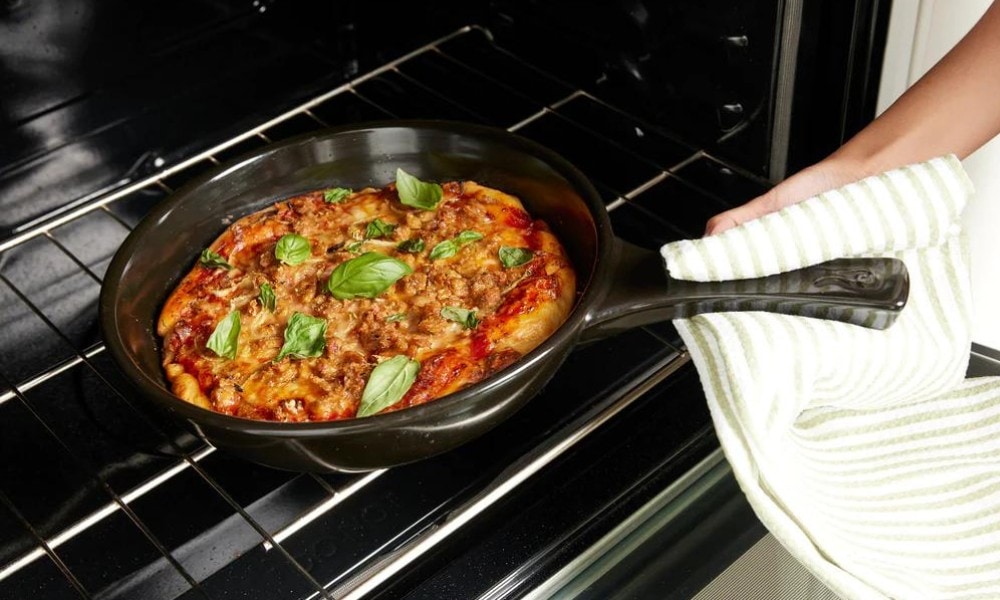
Pure ceramic cookware is safe for acidic foods, oven use, and gentle stovetop use. You need to use some oil when cooking in these pans. Since there is no metal to stabilize pure ceramic cookware, it is prone to thermal shock.
Ceramic Nonstick
Ceramic nonstick pans are made of aluminum or stainless steel with a Teflon-free coating. They are by far the most lightweight of these three options. While they are truly nonstick – at least at first – lower-end ceramic nonstick pans may need a bit of oil to release delicate foods.
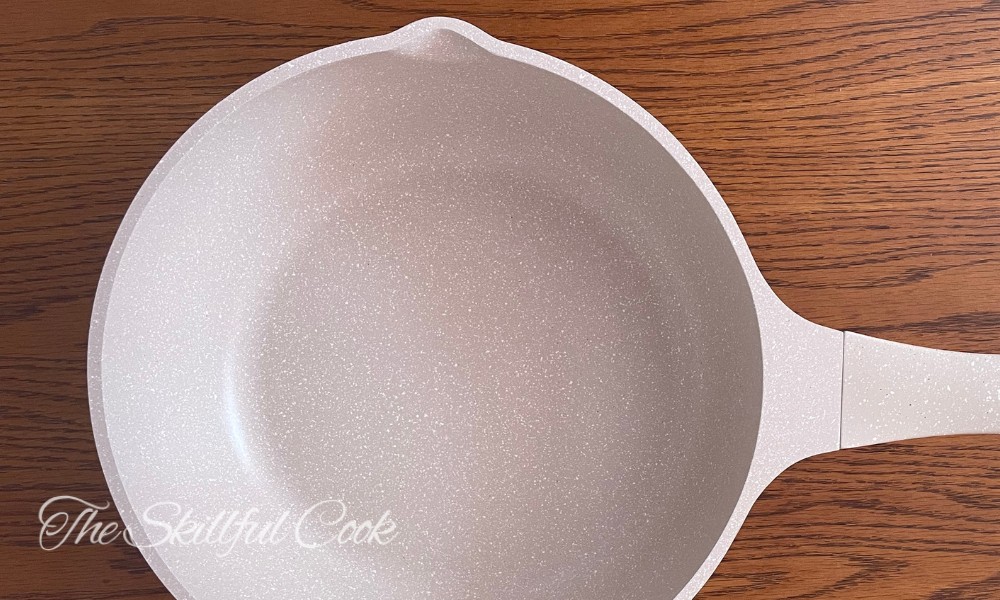
You have to avoid cooking over high heat or using metal utensils. Abrasive cleansers can also reduce the lifespan of your ceramic non-stick pan. To extend the life of your pan, you will need to hand wash your pan, even if it claims it is dishwasher safe.
Ceramic non-stick pans are very affordable, which is good since you will be replacing them anywhere from 6 months- to 3 years, depending on the quality you purchase. Caraway is a great high-end brand, but it is considerably more expensive than a brand like Blue Diamond.
Enameled Cast Iron vs Ceramic Non-stick vs. Pure Ceramic
| Enameled Cast Iron | Ceramic Non-stick | Pure Ceramic | |
|---|---|---|---|
| Example: | Le Creuset | Blue Diamond | Xtrema |
| Lifespan | Decades | 6 months- 3 years* | 10-15 years |
| Cost | $$$ | $ | $$ |
| Weight | 4.2 lb (9” skillet) | 1.74 lb (10” skillet) | 3 lb (9” skillet) |
| Metal Utensil Safe | Yes | No | Yes |
| Construction | 3 enamel layers | Ceramic over metal | 100% clay |
| Oven Safe | 500°F (260°C) | 600°F (315°C) | 2500°F (1371°C) |
| Care | Dishwasher Safe | Dishwasher Safe | Dishwasher Safe |
| Nonstick Ability | Fair (needs oil) | Good-Excellent* | Good (needs oil) |
| Made In | 🇫🇷 France | 🇨🇳 China | 🇨🇳 China |
As you can see from our chart, there are quite a few differences between the three types of cookware.
Which Cooks The Best, Ceramic or Enameled Cast Iron?
Enameled Cast Iron
Enameled cast iron holds heat better than almost any other cookware. This steady temperature makes it easier to sear and cook food evenly. Dutch ovens come with tight-fitting lids that help roasts and stews retain moisture, and some of them come with self-basting designs.
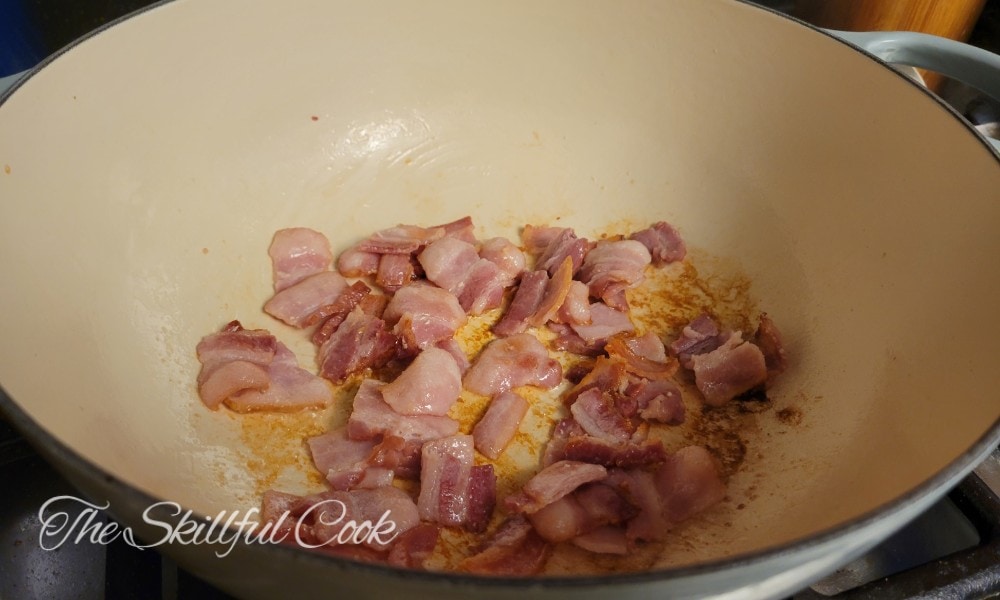
Because it’s thicker, enameled cast iron takes longer to heat up. Sudden temperature swings can cause cracks in the enamel, so you should never place a hot Dutch oven in the fridge – or a cold one right on the stovetop. Let it come to room temperature before you transfer it or wash it. I learned this the hard way, causing hairline cracks on a new Le Creuset.
Pros
Cons
Pure Ceramic
Pure ceramic cookware is more rare than ceramic coated. Most ceramic dishes are not safe to use on the stovetop, but some
Xtrema cookware is not non-stick, so you will need to use butter or oil, though the glaze helps keep it from sticking as much as it would to an uncoated surface.
On the stovetop, pure ceramic cookware takes a while to come to heat and doesn’t heat as evenly as enameled cast iron. The handle gets hot, and you need to be extra careful that you don’t drop your
Pros
Cons
Ceramic Nonstick
Ceramic nonstick cookware has a slick surface. It’s often reinforced with diamond, titanium, or granite particles for (alleged) extra durability.
Since the pan body is made of aluminum, it’s lightweight and easy to maneuver. It heats quickly and quality pans cook evenly. When it’s new, the coating will release food with little to no oil.
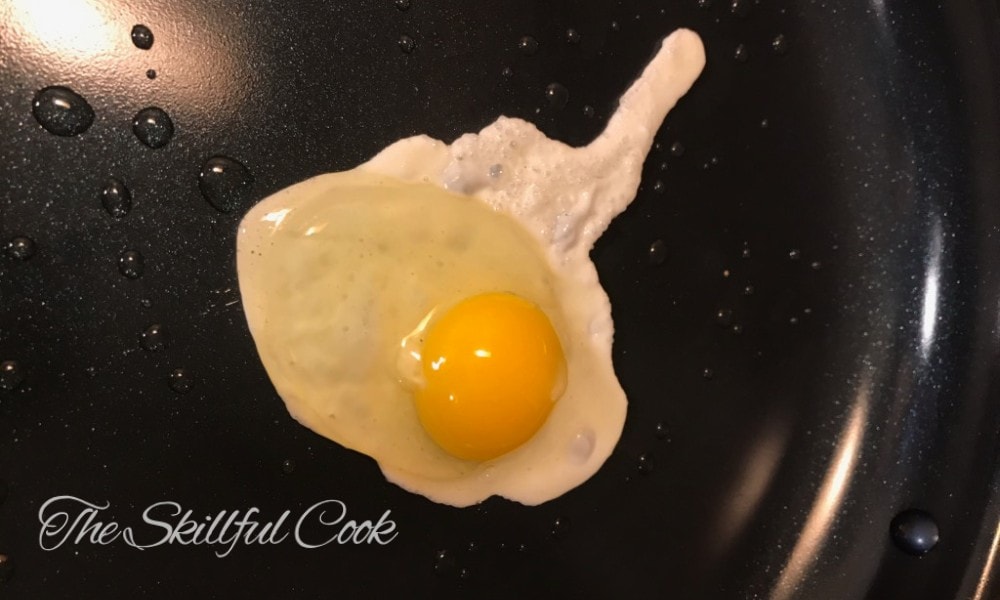
Unfortunately, ceramic nonstick coatings wear out quickly – no matter how much diamond dust they’re coated in. The coating scratches easily with metal utensils and the expanding and contracting of the pan as it heats and cools will cause micro-cracks in the ceramic over time. If you use it on high heat, this happens even faster. I love ceramic nonstick for occasional use – like cooking eggs and hash browns a couple times a week. But it won’t work for searing a steak.
Most ceramic pans are not oven-safe, but there are some exceptions.
Pros
Cons
Are Enameled Cast Iron or Ceramic Pans Healthier to Cook With?
I like to say there’s no such thing as “healthy” pans – only healthy food! And even that’s not entirely objective, since everyone has different health goals. Some pans allow you to use less oil when you cook. Some will leach metals like iron into your food.
At The Skillful Cook, we have a full review of the best non-toxic cookware options. But here are some thoughts to consider regarding the health risks and benefits of cooking on ceramic vs enameled cast iron.
Enameled Cast Iron
Iron itself is a food-safe material, but enameled cast iron is coated in 2 or 3 layers of porcelain enamel to prevent iron from transferring to your food. The porcelain on vintage enameled cast iron may contain small amounts of lead or cadmium as color enhancers.
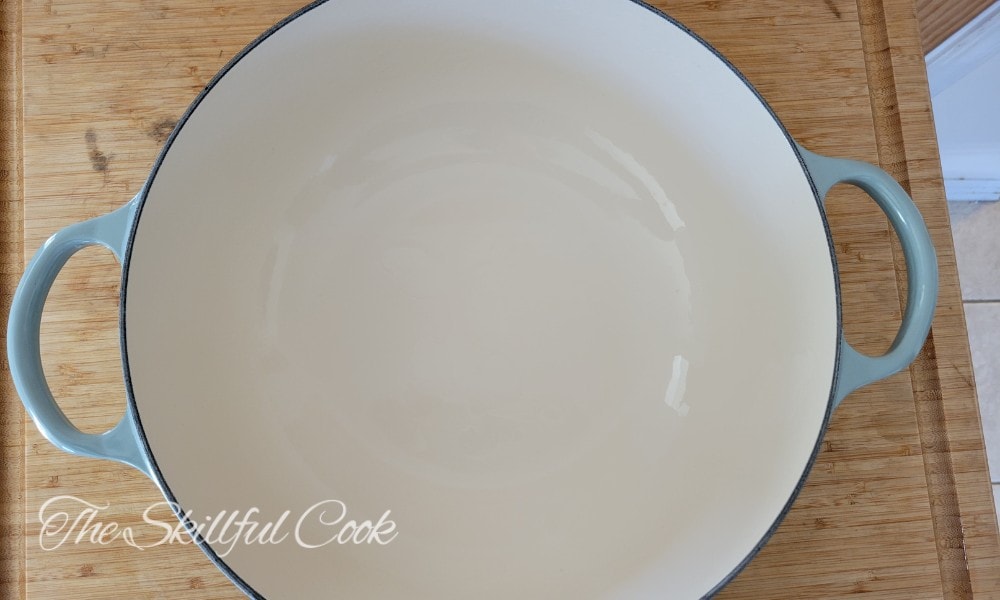
Cookware companies that sell their products in the US are required to meet FDA and California Proposition 65 requirements for leachable lead in cookware – which means a product should not transfer “unsafe levels’ ‘ of lead and other toxic metals to food cooked in it. This is a complicated topic, and we’ve done a number of in-depth articles on it here at The Skillful Cook. (TL:DR, we recommend Staub as the safest option!)
Like ceramic cookware, enameled cast iron is made without PTFE, PFAS, PFOA, and other synthetic polymers. It won’t release toxins into the air if overheated, like Teflon pans will. It is free of aluminum and a host of other potentially concerning materials.
Pure Ceramic Cookware
Pure ceramic cookware is free of iron, aluminum, nickel, and other metals. Both brands that we recommend are California Prop 65 compliant, and Emile Henry claims to be lead-free.
Unfortunately, the glazes in traditional or artisan-made ceramics have been linked to lead poisoning, so you should have artisan-made ceramics leach tested before using them.
Pure ceramic doesn’t interact with acidic foods, doesn’t contain “forever chemicals,” and doesn’t give off toxic fumes at high heat. You will need to use oil when cooking with pure ceramic pans.
Ceramic-Coated Cookware
Ceramic-coated cookware is relatively new, so we don’t know everything about its long-term health effects. It is considered “most likely” safe by experts at Healthline. Unlike traditional nonstick coatings, it is free of PTFE (polytetrafluoroethylene) and PFOA (perfluorooctanoic acid).
Ceramic coatings are made through a much more complex process than pure ceramic and enameled cast iron pans, so materials used varies more from brand to brand. Blue Diamond cookware, for example, lists “chemicals of concern” that are not found in the coating itself, but may be present in the handles or layers beneath the coating.
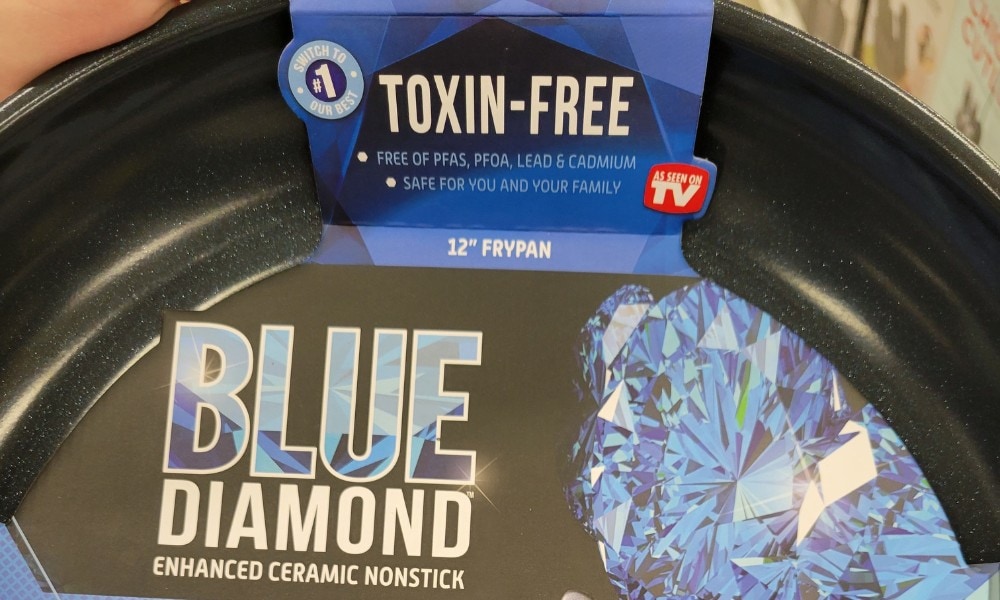
Some people have also questioned the safety of nanoparticles used to coat the ceramic-coated cookware, as they have been shown to more easily enter lung and cell tissue than larger particles. If your cookware is deeply scratched or the coating begins to flake, it’s time to toss that pan.
You can find our comprehensive breakdown of ceramic cookware safety here.
Ceramic-coated cookware will not release fumes at high temperatures, like Teflon will, but very high temps will ruin the nonstick ability of the pan.
If cooking with little to no oil is a priority for you, ceramic coated will be your best choice of the three.
FAQ
Is any enameled cast iron made in America?
There are a few brands that do make enameled cast iron in America. USA Enamel by Lodge has three Dutch oven colors and Borough Furnace also has a lovely enameled Dutch oven.
Is any ceramic cookware made in America?
Yes! Nordic Ware has several US-made pans with an aluminum steel core and ceramic coating.
Conclusion
Of these three materials we’ve talked about, my favorite is enameled cast iron. While it is more of an upfront investment, enameled cast iron pieces made by Le Creuset or Staub will last a lifetime with proper care. Enameled cast iron is safe, cooks amazingly, and is relatively easy to care for.
If you want to use ceramic cookware, be sure to purchase a quality brand and look at the safety information on a brand-by-brand basis. A (more expensive) high-end brand like Caraway would be my choice, though at a similar price point, Xtrema pure ceramic is also a good option.
Have you used enameled cast iron or ceramic cookware? What did you think? Drop a comment below, and be sure to let us know if you have any questions!

